I Get By With a Little Help From My Friends
And by “friends” I mean humans, yes, but also art and natural beauty
Cari amici,
The world is a-tilt (except: go Canada!) and we’re all stressed out, wherever we are, by various goings-on of local, national, and global significance, which I have no intention of discussing. Instead, what I hope to do today is encourage you to find whatever coping mechanism suits you, and then do it, often. Maybe you’re already doing it, to which I say, “Bravo/a! and now do more of it, more often.” Because it’s easy to get bogged down in our day-to-day ruts, to unthinkingly fall into self-annihilating doomscrolling. If that hits close to home for you, then I’m writing to you today.
It’s astonishing to me that I have to constantly remind myself to look for antidotes to despair and hopelessness, but I do. And damn if my fix, though admittedly temporary, isn’t ridiculously easy to do or find, and therapeutic in a big way. Because I’m back in my daily rhythm after a weekend away, yet I feel like I can breathe again. Breathing is good. Let’s all breathe.
My weekend therapy had two components: one, a co-traveler friend; and two, natural and human-made beauty. Oh, but let’s not forget the five days I spent in Rome in March, which included a ton of art. And for me, art is therapeutic—in its beauty, its emotional provocations, and as distraction. Being consumed by what’s in front of me makes the “real world” disappear into the wings. Standing there in the Capitoline Museums, surrounded by art spanning thousands of years, I was taken with the rather overwhelming realization that, in that moment, I was completely happy. For those five or six hours I was transported, in a place of utter peace and joy.
When it comes to beauty, Italy delivers, always and plentifully. Before this last visit to Rome, I’d never walked around the archaeological zone at night (and ye gods, why not?), and what a spectacular show that is! My days in Rome were filled with museums (enormous, famous, niche, and little-known), ruins, neighborhoods, and some fantastic in-situ art in various churches. Then, last weekend I picked up a friend in my little red Toyota and we drove to Castel Gandolfo, 45-ish minutes south of Rome, hoping to do very little besides soak up some sun-drenched views of Lago Albano (we’d been having tons of rain and persistent cold weather) before heading farther south the next day. Though the Palazzo Pontificio, the pope’s summer residence, was closed that day due to Papa Francesco’s funeral, it all worked out. We ate, we shopped, and we found out that our hastily booked hotel was of the soul-lifting variety.
I mean, just opening your bedroom window onto a view like this makes all the dark nasties in your brain fizzle and die.
Inside, pretty things kept us exclaiming: pink-and-white Murano chandeliers; modern chandeliers and sconces that seemed (at first glance) to be made of folded paper; a spacious lounge (where we sat drinking, and drinking in the view, for hours) with a white baby grand piano and clusters of chairs and loveseats; an airy breakfast room with a Roman-ish statue looming over a turquoise swimming pool. You get the idea.
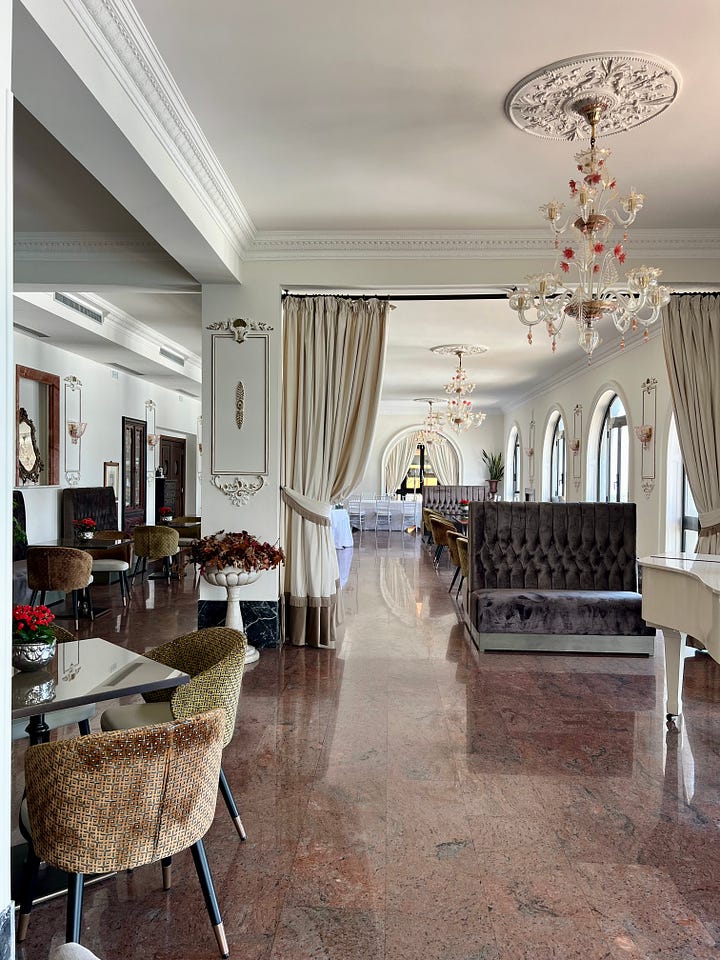

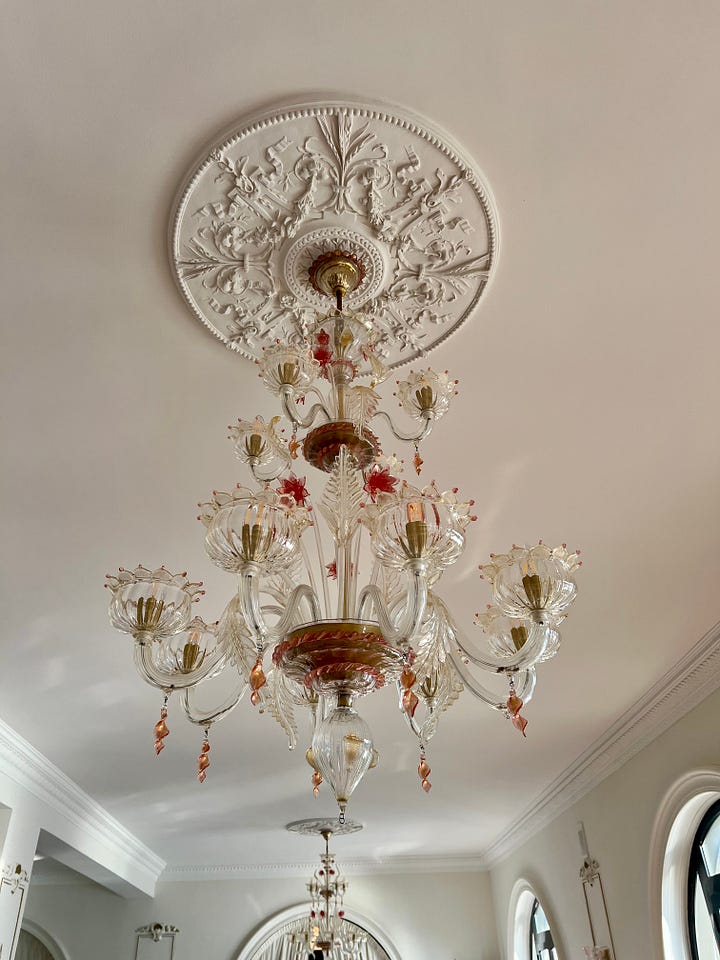
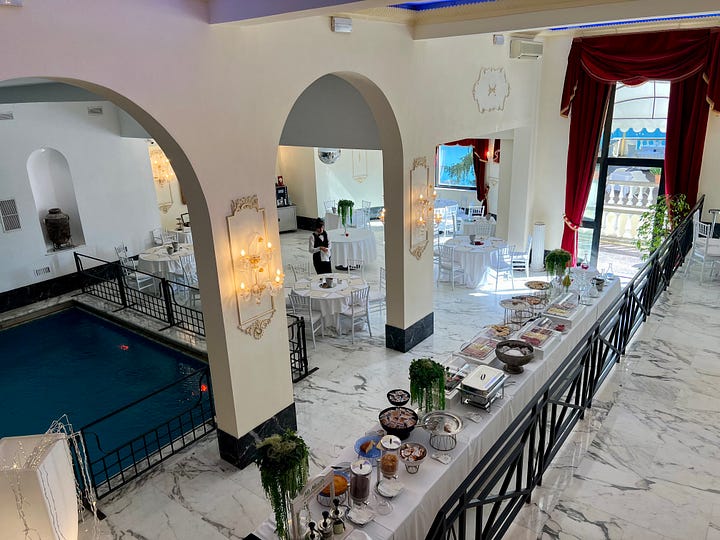
The next morning we headed off to the Giardino di Ninfa, about 45 minutes south of Castel Gandolfo in Cisterna di Latina. It turned out to be a surprise in a couple of ways, which was entirely my fault. You see, I used to be the kind of person who did a ton of research before a trip (a practice I’d like to re-cultivate); lately I’m lucky if I can book tickets and throw a few things in a bag. So that leisurely visit we’d planned, four or five hours, say, to explore the gardens, turned out to be a guided tour (mandatory) of about 90 minutes. And the formal gardens I’d imagined were—not that. Not that I’m complaining; it’s a gorgeous place.
What I liked best about the Giardino is its state of romantic ruin, which is terribly suitable given that Ninfa means “nymph” and you could just picture nymphs flitting around. When the last important family of Ninfa, the Caetani, decided to create gardens in the long-abandoned town, they built them around and within the ruins instead of clearing and redesigning the space, to great effect.
What’s that? You want to know why Ninfa was abandoned? Well, it all started with the Great Schism of 1054, in which differences in theological1 and ecclesiastical2 thinking divided the Catholic Church3 and the Eastern Orthodox Church.4 A main point of disagreement (and there were many) centered on whether the Holy Spirit was part of the Holy Trinity along with the Father and the Son. But I digress.
Anyway, after the Great Schism, anti-papal factions swept in to sack and destroy Ninfa, which was part of the Papal States. If the few surviving citizens had had any thoughts of rebuilding, their plans were scuttled by malaria. Everyone decamped, and the Caetani headed off to Rome. And there the town sat, ghosted, until the late 1800s, when the long transformation from abandoned ruins to lush gardens began.
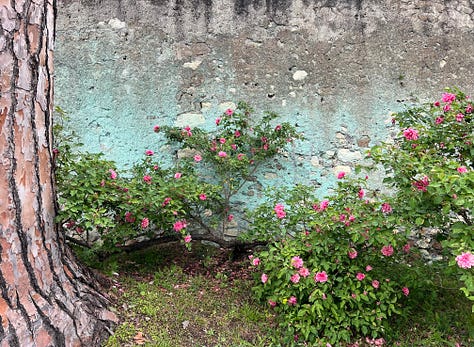
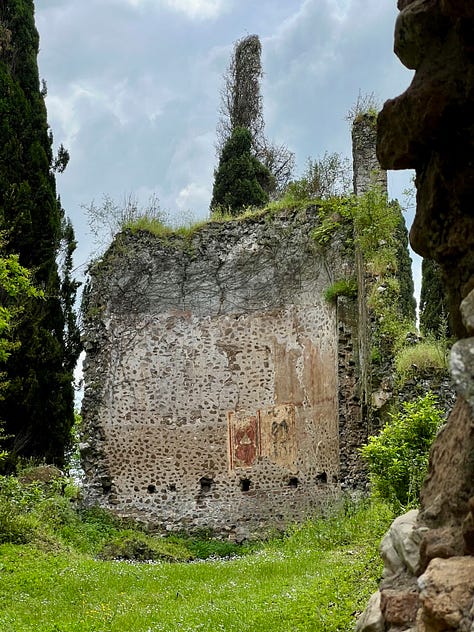
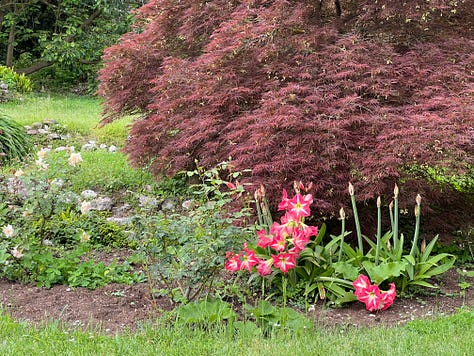
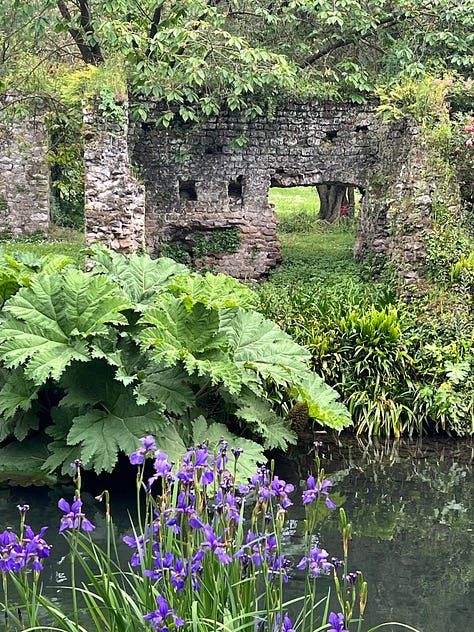
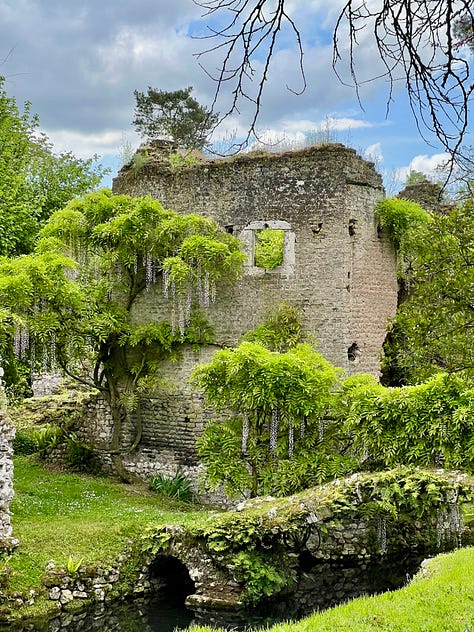
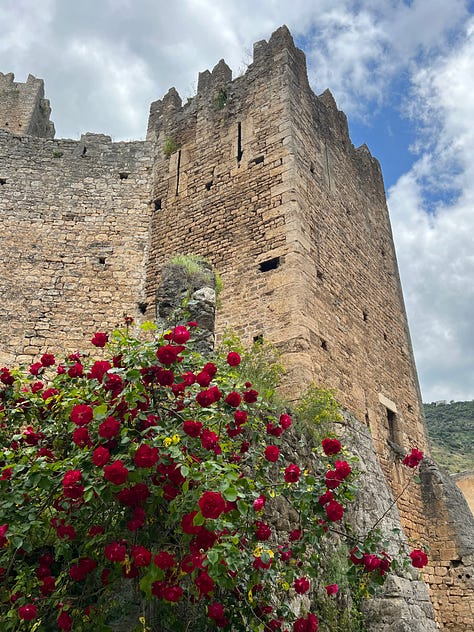
Like so much of the Italian experience does, Giardino di Ninfa melds past and present. It’s a place as different from the Capitoline Museums as you could hope to find, yet equally restorative. There’s a sense of history but also of continuity, a sense that from devastation there can arise beauty that doesn’t try to hide every scar. You don’t have to know a lot about art or architecture to reap the benefits of passing time in beauty’s often astonishing presence. All you have to do is let yourself go, listen to your eyes and brain when they tell you that there is goodness in the world, and that such goodness was (or is) made by people who understood (or understand) the healing value of beauty in our ordinary lives, and the communicative spirit of art.
I’m reminded of that now every time I look up from my keyboard and see a gris pottery cup slathered with thick, cobalt-blue paint that makes it only halfway down the sides, pooling in heavy droplets. I’m glad I gave my money to the artisan who made it, supporting her in my small way. She doesn’t know it, but her art—like Greek statues and Roman mosaics and medieval paintings and Renaissance frescoes and glorious cathedrals and jaw-dropping modernity of all kinds—it keeps me going.
Tante belle cose. Alla prossima—
Cheryl
Italian words of the day
zoomare (to zoom in), which I overheard a mother say to her daughter, who was taking a photo, at Giardino di Ninfa. Who knew!
vale la pena / è valsa la pena (it is/was worth it, or worthwhile), which I chose because my friend learned it on our trip.
Books of the day
SPQR: A History of Ancient Rome by Mary Beard. (Disclaimer: I’m about to dive in, and it’s a long, deep dive, so we’ll see how far I get.)
North of Naples, South of Rome by Paolo Tullio (I’ve been obsessing about Val di Comino, which I wrote about here, so when I found this book at a charity shop it seemed like a sign. Of what, I’m not sure.)
P.S. My book! Which you can buy here or on the usual sites, or, better yet, order it from your local bookstore. Another fab option is to ask your library to stock it. If you read it and like it, please tell your friends and/or leave a few lines of praise on any bookish site. You’d be surprised how much a rating or review helps authors. Baci!
religious dogma (principles) and doctrines (beliefs)
the organizational structures and governance of a Church
whose theology was based on Roman law
whose theology was based on Greek philosophy



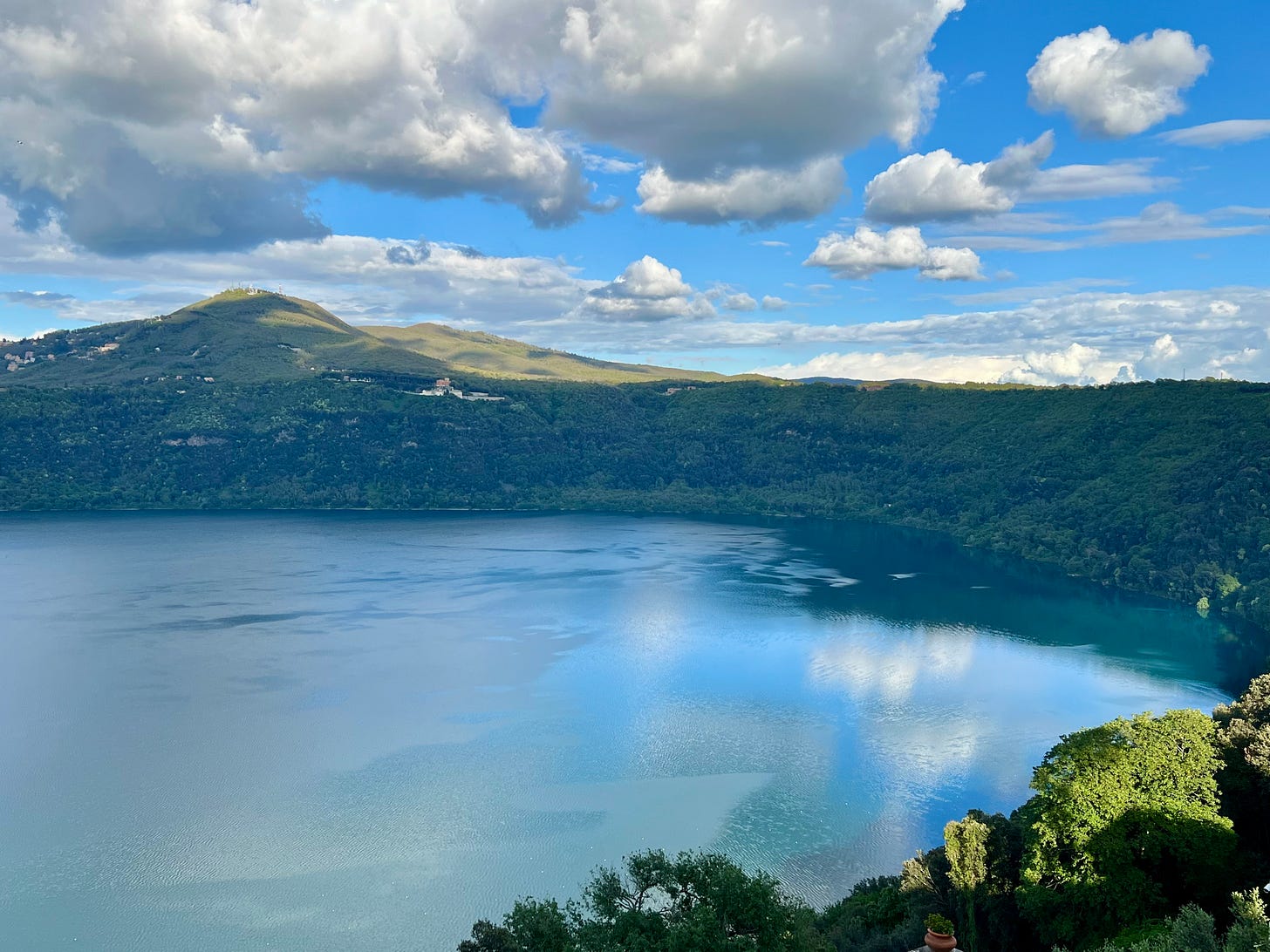

One life is not enough to see and pleasure in all the beauty we have here in Italy. While I still have not been to Ninfa I do enjoy the magnificent sunsets of Tuscia and the Renaissance garden s close to home ,
Wow, Ninfa looks amazing. It's been on my list for a while-- this seems like the perfect season to visit. And I completely agree with you about the need for art and beauty. We relocated to Rome from NYC late last year-- sometimes I feel a bit guilty enjoying the ceaseless flow of beauty in this amazing city while friends in the US are dealing with whatever it is one could call what's happening there. But your post helped me banish my guilt. Here's to the restorative powers of the creative spirit.